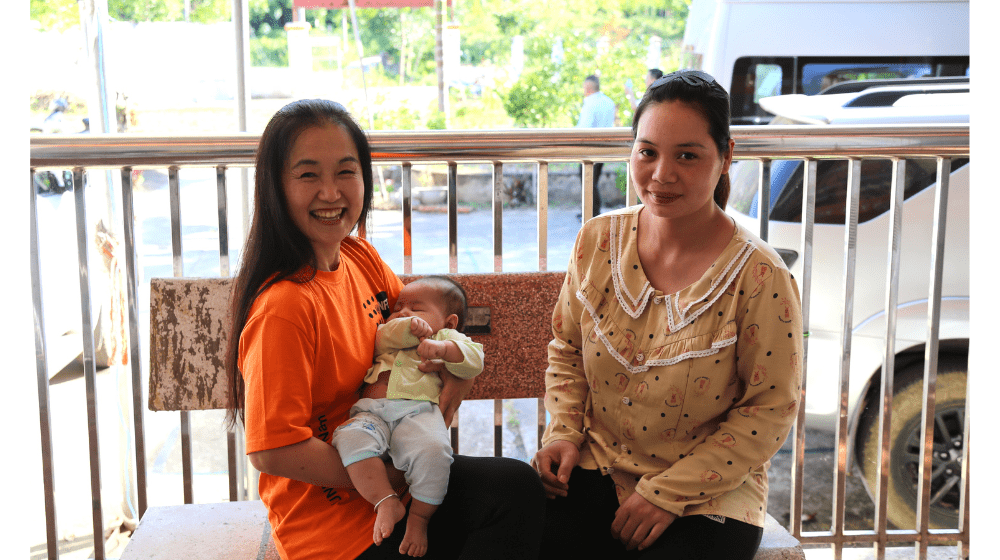INFORMATION FOR MEDIA
Vietnam’s population will soon reach 100 million and Vietnam should celebrate this milestone
“100 million hopes, 100 million dreams, and 100 million possibilities.”
A significant milestone to celebrate
- Vietnam’s population will soon reach 100 million, and Viet Nam will become the 15th most populous country in the world. This should be seen as an important milestone for Vietnam, and I would like to congratulate the Government of Vietnam as this demonstrates a story of triumph. Vietnam, which was once a war-torn country, has successfully taken a substantial number of people out of poverty, and achieved remarkable socio-economic growth including health, education, employment, technological advancement, and so on.
- The world is changing at rapid pace however, and Viet Nam should not fall behind. Having 100 million population would mean a sizable domestic market, possibilities to attract more foreign direct investment with the availability of healthy, well-educated and skilled labour force, innovative and creative minds, and strong dynamism in the country. It is thus critical to recognize that 100 million in 2023 is not just the number. It is a vision of building a forceful Viet Nam for today’s and for tomorrow’s generations.
Opportunities and challengers
- As we launched last year #8BillionStrong campaign, when the world reached 8 billion population, 100 million people in Viet Nam mean, “100 million hopes, 100 million dreams, and 100 million possibilities.” Given Viet Nam’s progress in improving socio-economic status of its population, the country can now benefit from an increased pool of skilled human resources. Viet Nam currently has the highest proportion of young people in the country’s history. 21.1% of the total population are young people aged 10-24 years. Viet Nam’s unique demographic window of opportunities is still open until 2039 with the presence of such young and productive population groups, and the demographic bonus can be tapped into to accelerate the country’s socio-economic growth further.
- The challenge is that with mortality and fertility declines, Viet Nam will soon complete the demographic transition. It is a significant achievement that in today’s Viet Nam, people are healthier and live longer. But with fertility decline and limitation over the past decades, Viet Nam’s population is aging fast. Viet Nam is expected to become an aged country by 2036 when the number of people aged 65 and above will reach 15.5 million, accounting for more than 14% of the total population. Also, given son preference, which is still prevalent in Viet Nam’s society, coupled with fertility decline and limitation and availability of technology, prenatal sex selection is common, and 47,000 girls are estimated to be missing every year. It is projected that by 2034, Viet Nam will have an excess of 1.5 million men aged 15-49, and the number will reach 2.5 million by 2059.
Next steps to ensure sustainable development
- In Viet Nam’s path to sustainable development, it is critical to emphasize that people are not the problem, but people are the solution. It is not about the number, or more or fewer people, but it is about ensuring more and equitable access to opportunities for all.
- We advise Viet Nam on the following. First, the rights of people must be supported, including sexual and reproductive health rights and choices, and gender equality. As a guardian of the 1994 International Conference on Population and Development (ICPD), which Viet Nam signed up to, UNFPA advises that Viet Nam be fully in line with the ICPD principle that individuals and couples should be able to decide freely and responsibly the number, spacing and timing of children. In so doing, we all must ensure that every woman, every mother, and every couple should be able to access quality sexual and reproductive health care, and social policies for child and housing support can be considered for young couples. UNFPA globally estimates that every $1 invested in maternal health can expect $8.4 of economic return by 2050. Likewise, for every $1 invested in family planning, $10.1 of economic return can be delivered.
- Second, in order to fully benefit of the demographic bonus, UNFPA advises that Viet Nam continue to invest in young people through its policies and programmes on health, education, and employment opportunities, so as to meet the needs of the labour market in the new era and stimulate innovation in the country. Also, just as other Middle-Income Countries in the world, inequalities and disparities persist in the country. Maternal mortality and unmet need for family planning are substantially higher among ethnic minorities and migrant workers, as well as amongst youth. It is critical to strengthen the health-related policies on services, including sexual and reproductive health.
- And lastly, given such significant demographic shifts which are happening in Viet Nam, also as part of the global Mega-Trend, it is more critical than ever before that population dynamics and demographic analysis are carefully integrated in Viet Nam’s Socio-Economic Development Strategy and Plan, as well as in the National Action Plan for Sustainable Development. Here, particular attention must be paid to special needs of vulnerable population groups such as women and girls, adolescents and youth, older persons, ethnic minorities, migrant workers, people with disability, and survivors of domestic and gender-based violence. Moreover, with population aging, social security as well as long-term care and support mechanism for the elderly, especially for older women, must be safeguarded using a life-cycle approach, and the elderly’s continued and extended participation in economic activities should be encouraged.
- No one should be left behind in the country’s sustainable development process, and we must go beyond the one-size-fits-all approach in the diverse socio-economic context of Viet Nam.


